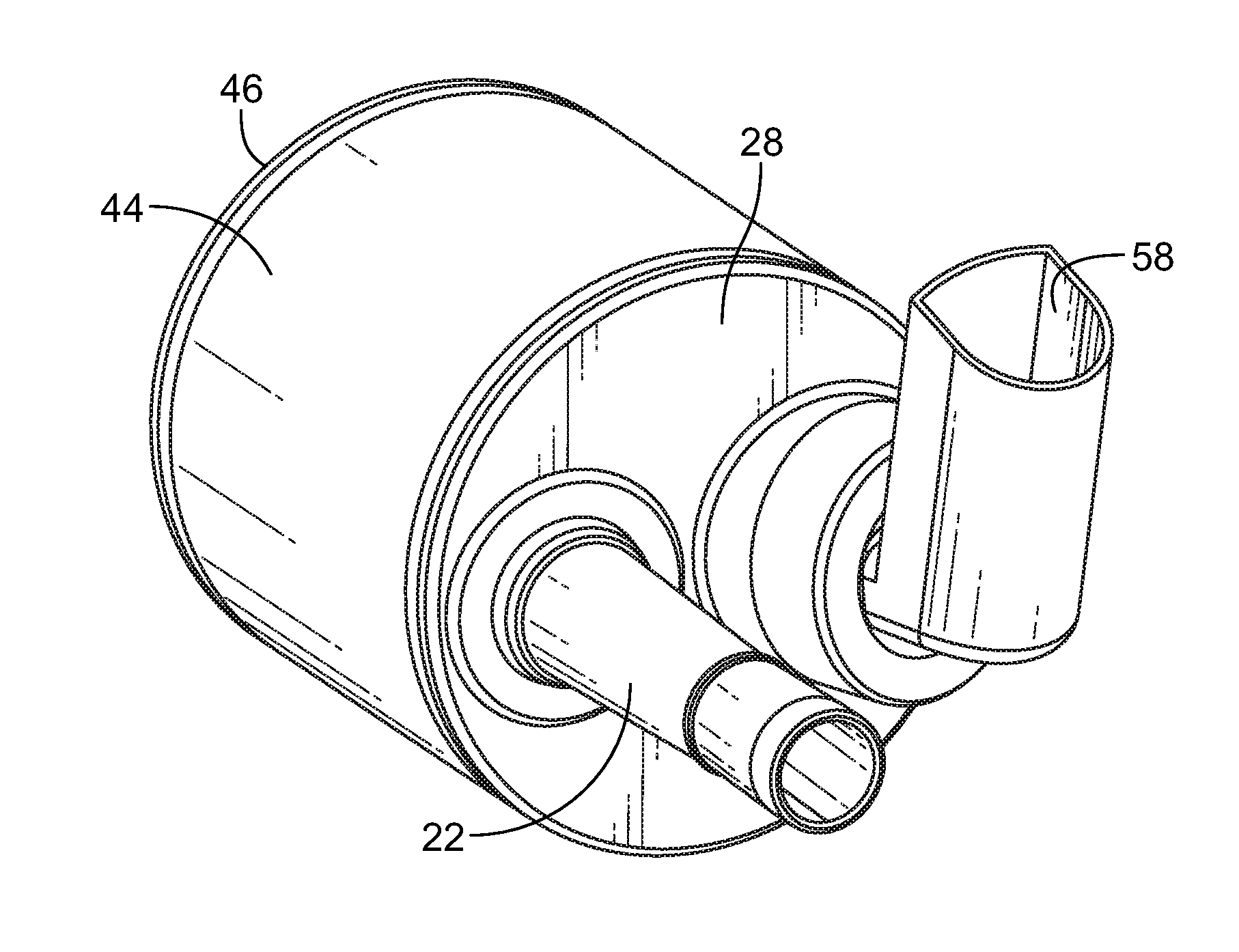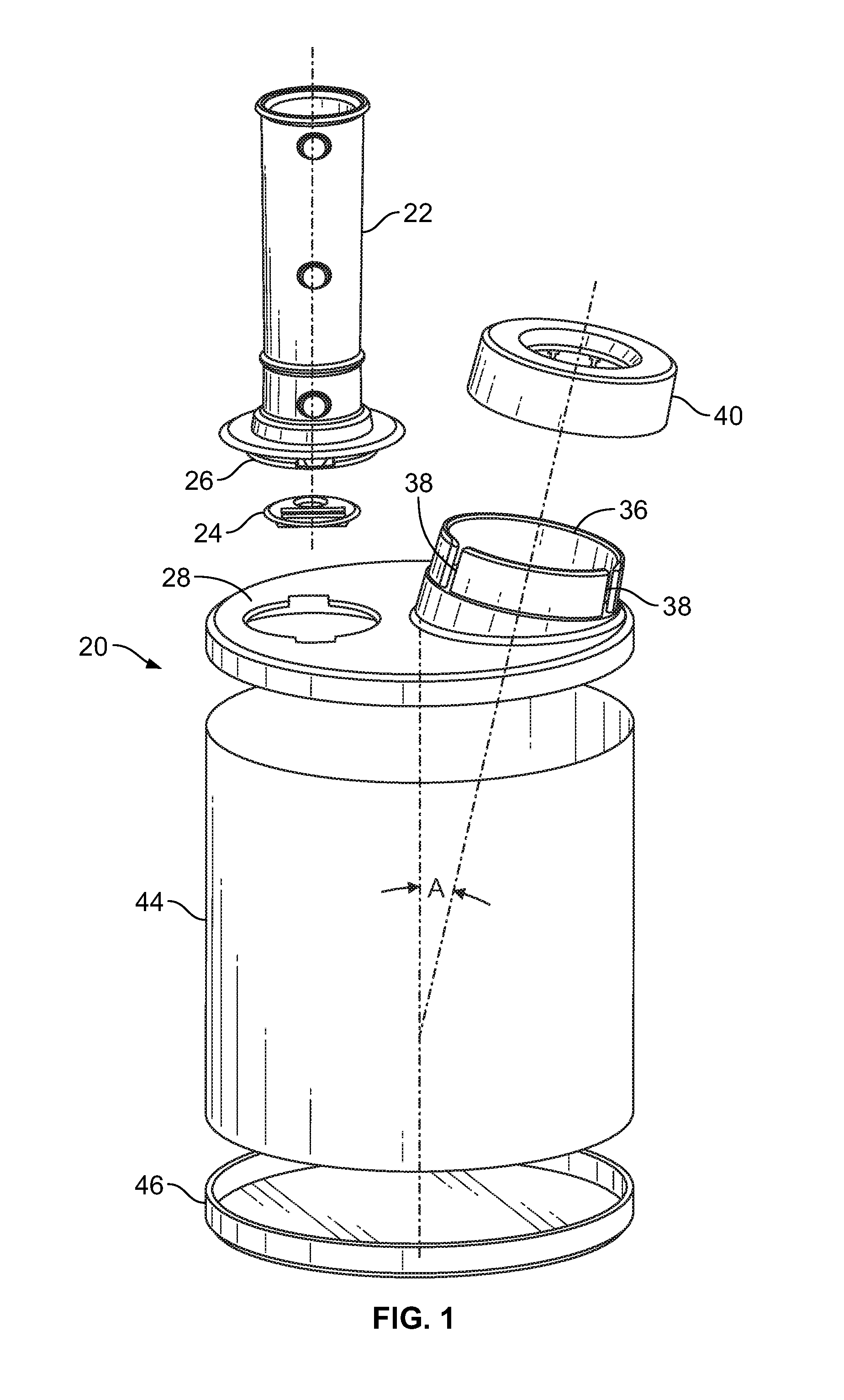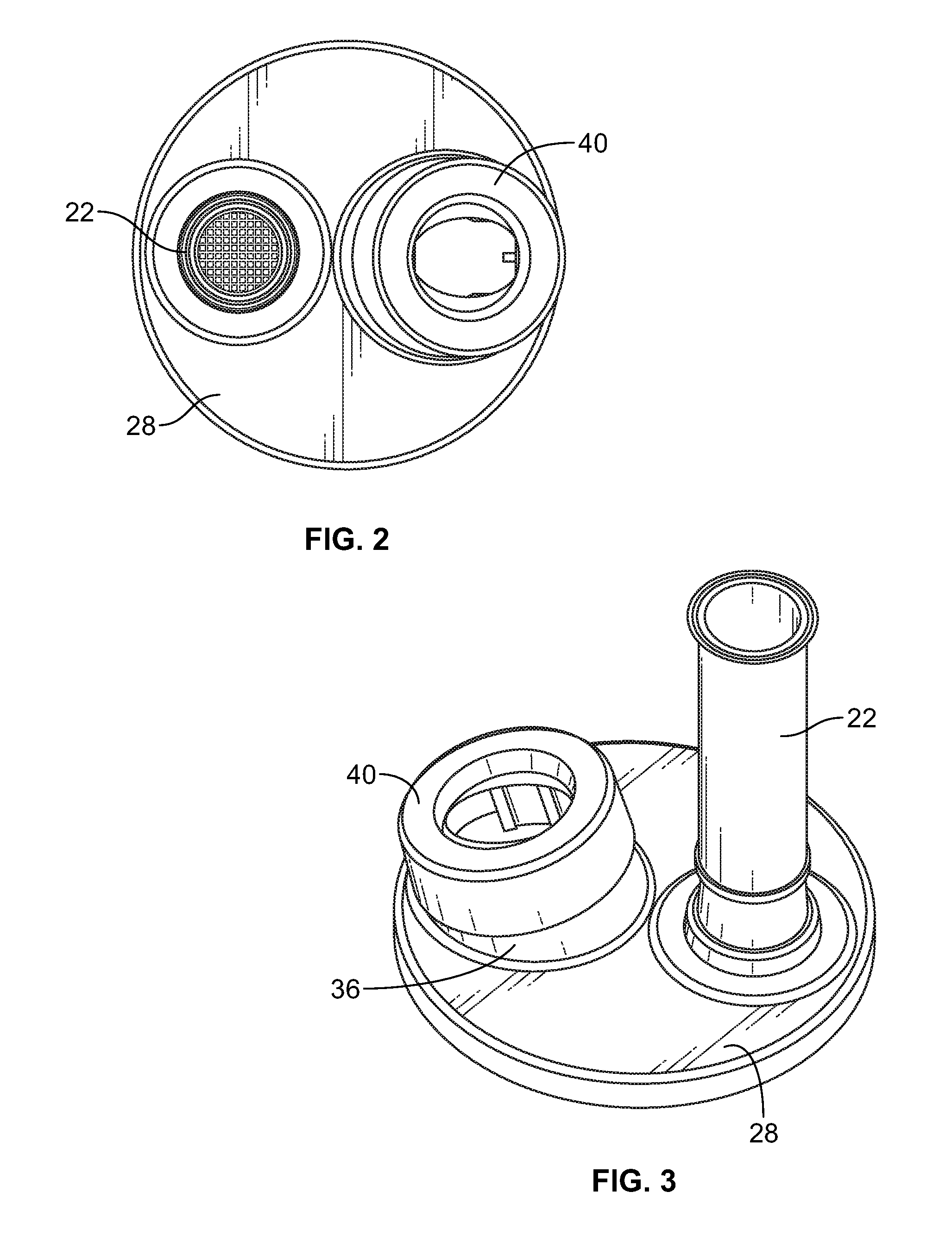Delivery System for Metered Dose Inhalers
a delivery system and inhaler technology, applied in the field of inhalation systems, can solve the problems of poor disease control, poor lung deposition of medication, and many patients cannot or will not use mdis as intended, and achieve the effects of effective inspiratory flow reed signal, simple and efficient device, and convenient us
- Summary
- Abstract
- Description
- Claims
- Application Information
AI Technical Summary
Benefits of technology
Problems solved by technology
Method used
Image
Examples
Embodiment Construction
[0028]Turning first to FIG. 1 there is illustrated an exploded view of the delivery device for metered dose inhalers 20. There is a mouthpiece 22 that has a reed 24 inserted into a lower end 26 of the mouthpiece 22. The mouthpiece 22 is inserted into a top end cap 28 through opening 30. The opening 30 has two opposite rectangular slots 32 which receive locking tabs 34 at the lower end 26 of the mouthpiece 22 (seen in FIG. 5).
[0029]The top end cap 28 also has an upstanding collar 36 angularly disposed with respect to the top planar surface of the top end cap 28. There are a pair of vertically disposed keyways 38 cut into the wall of the upstanding collar 36. An MDI adaptor 40 is mounted on the collar 36. There are keys 42 (FIG. 9) that are received in the keyways 38 to properly align the MDI adaptor 40 with the collar 36. There is a channel 41 in the MDI adaptor that receives the collar 36 in tight engagement to firmly, but releasably retain the MDI adaptor 40 on the collar 36.
[0030]...
PUM
 Login to View More
Login to View More Abstract
Description
Claims
Application Information
 Login to View More
Login to View More - R&D
- Intellectual Property
- Life Sciences
- Materials
- Tech Scout
- Unparalleled Data Quality
- Higher Quality Content
- 60% Fewer Hallucinations
Browse by: Latest US Patents, China's latest patents, Technical Efficacy Thesaurus, Application Domain, Technology Topic, Popular Technical Reports.
© 2025 PatSnap. All rights reserved.Legal|Privacy policy|Modern Slavery Act Transparency Statement|Sitemap|About US| Contact US: help@patsnap.com



